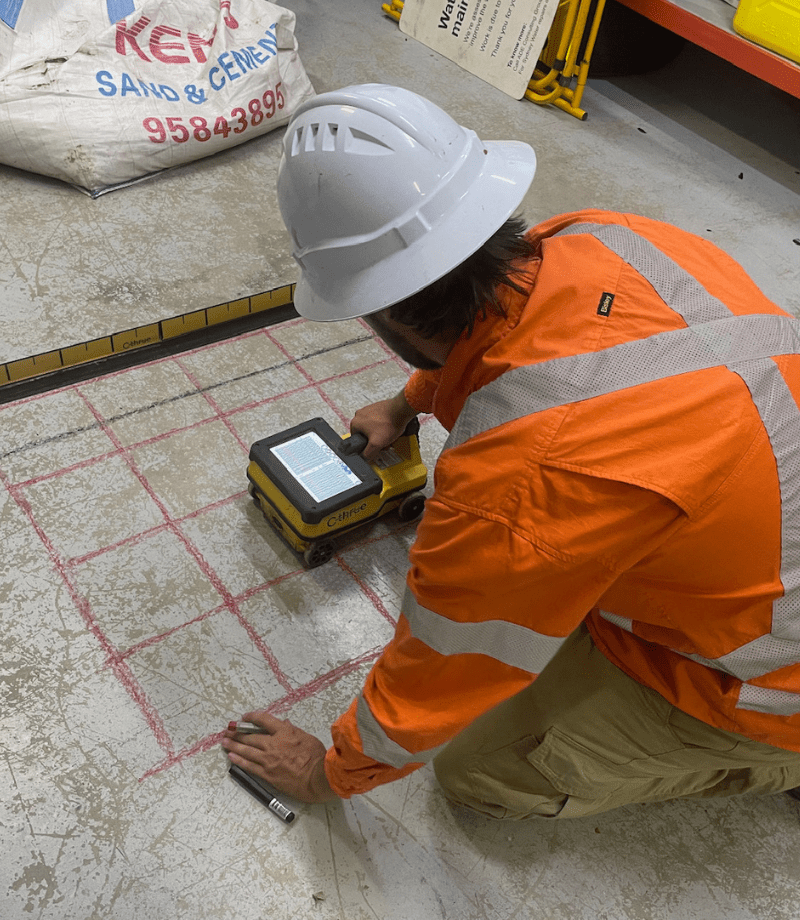Unveil the Transformative Power of Concrete Scanning in Making The Most Of Performance and Security
Concrete scanning has actually arised as a critical tool in the construction market, using unrivaled benefits in improving task efficiency and making sure safety criteria. The transformative power of concrete scanning lies in its capability to offer real-time data and thorough understandings, revolutionizing how tasks are intended and carried out.
Value of Concrete Scanning
Making certain the architectural stability and security of construction projects starts with the essential action of performing thorough concrete scanning. Concrete scanning is a non-destructive method made use of to find and map subsurface elements within concrete structures.
The relevance of concrete scanning can not be overstated, as it plays a crucial duty in preventing mishaps, lessening job delays, and guaranteeing the lasting durability of the building and construction. By identifying prospective threats before the building stage begins, builders can execute appropriate security actions and make informed decisions regarding the style and implementation of the project. In addition, concrete scanning helps in maximizing project timelines and budget plan by avoiding unforeseen prices and hold-ups that might arise as a result of unforeseen blockages within the concrete. Eventually, spending in detailed concrete scanning is a proactive approach that enhances both efficiency and security in building jobs.
Exactly How Concrete Scanning Functions
Concrete scanning operates as a vital device in construction tasks by utilizing advanced modern technologies to discover and map subsurface components without triggering structural damages. Ground Passing Through Radar (GPR) and Electromagnetic Induction (EMI) are 2 key approaches used in concrete scanning. GPR jobs by emitting high-frequency radar pulses into the surface, which jump back when they experience subsurface objects or gaps. The moment considered the signal to return suggests the deepness and place of the things. EMI, on the other hand, utilizes electro-magnetic fields to recognize variances in product compositions, such as determining rebar or channels within concrete frameworks.
During the scanning procedure, the information collected is analyzed in real-time, allowing instant identification of prospective risks or obstacles below the surface area. By utilizing these sophisticated technologies, concrete scanning substantially decreases the risk of pricey damages and injuries on building and construction websites.
Benefits of Concrete Scanning
Using sophisticated scanning technologies in construction projects offers a multitude of advantages, boosting both performance and safety on-site. One of the primary benefits of concrete scanning is the capability to spot and situate embedded things such as rebar, post-tension cable televisions, and channels precisely. By determining these aspects before boring or cutting into concrete frameworks, the threat of unintended strikes is dramatically lowered, protecting against possible injuries to employees and damage to the structure itself. Concrete scanning browse this site helps in planning and making extra efficiently, as it gives accurate details regarding the location and deepness of structural parts.

Study: Concrete Scanning Success

In another instance, a construction business made use of 3D concrete scanning to evaluate the condition old concrete structures in a historic building. The thorough scans provided valuable insights into the level of wear and tear and aided prioritize maintenance initiatives efficiently. By proactively resolving areas of issue determined via scanning, the company was able to prolong the life-span of the structure and make certain occupant safety and security.
These case research studies emphasize the transformative power of concrete scanning in enhancing effectiveness, precision, and safety and security in construction projects.
Executing Concrete Scanning in Projects
Applying advanced scanning modern technologies throughout building and construction tasks has become increasingly crucial for enhancing precision and safety. By integrating concrete scanning into project planning and execution, building teams can identify prospective threats, such as rebar or post-tension cords, concealed within concrete frameworks. This aggressive approach lessens the risk of accidents, hold-ups, and costly rework, inevitably resulting in much more effective project timelines and spending plans.
To apply concrete scanning successfully, project managers should team up very closely with knowledgeable scanning professionals to identify the most ideal scanning methods for the specific task demands. Involving scanning navigate to this site professionals from the beginning of a job allows the team to develop detailed scanning strategies that address crucial locations of problem and ensure thorough data collection.
Moreover, including concrete scanning into routine job workflows can streamline decision-making procedures, as real-time check data offers immediate understandings into the problem of concrete structures - Concrete Scanning. This data-driven strategy promotes notified analytic and allows groups to make modifications without delay, promoting a society of effectiveness and safety throughout the task lifecycle
Final Thought
Finally, concrete scanning plays a critical role in boosting effectiveness and security in building tasks. By go making use of sophisticated modern technology to map and detect out underlying structures within concrete, this procedure aids to avoid expensive mistakes, guarantee architectural stability, and decrease dangers on website. With the capability to reveal surprise elements and provide precise information, concrete scanning verifies to be a useful device for optimizing project end results and maximizing general success.
Concrete scanning is a non-destructive method made use of to discover and map subsurface components within concrete structures. Additionally, concrete scanning helps in enhancing job timelines and budget by preventing unexpected expenses and hold-ups that may develop due to unpredicted obstructions within the concrete. One significant instance research entails a large-scale restoration job where concrete scanning played an important role in making sure job success.In an additional case, a construction firm used 3D concrete scanning to assess the condition of aging concrete structures in a historical building. By integrating concrete scanning into job planning and implementation, construction teams can recognize possible threats, such as rebar or post-tension cords, hidden within concrete structures.